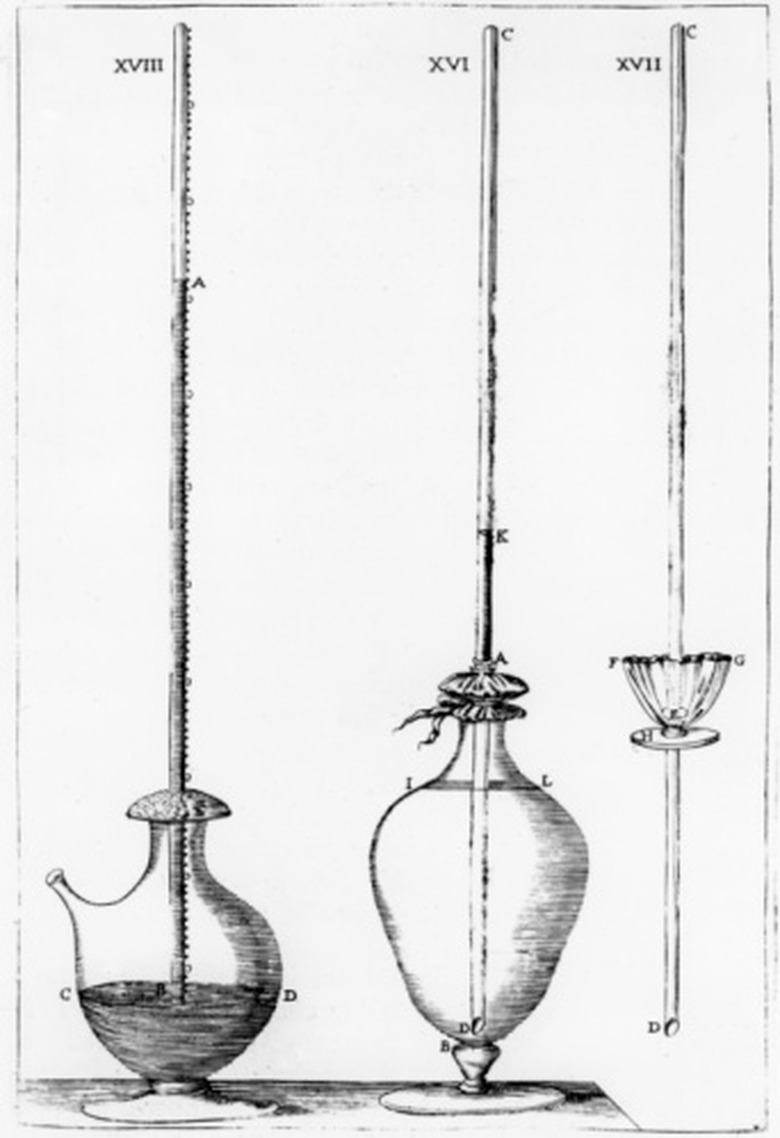How To Go From CM To MMHG
Meteorologists and scientists use a variety of methods to describe pressure. One common unit of reporting pressure is centimeters (cm) of water and another is millimeters (mm) of mercury. Units of mm mercury are often abbreviated mm Hg since "Hg" is the chemical symbol for mercury. These units date back to early methods of measuring pressure and describe the height of a column of water or mercury that a given air pressure could support. Normal atmospheric pressure, for example, is 760 mm Hg. You can convert from cm water to mm Hg using a basic mathematical operation.
Step 1
Enter the value of pressure, in units of centimeters (cm) water, into the calculator. For example, if your pressure reading was 500 cm water, you would enter 500.
Step 2
Divide the value you just entered by 1.36. This number is a conversion factor based on the relative densities of water and mercury and also the difference between centimeters and millimeters. In the example, you would calculate 500/1.36 = 368.
Step 3
Report the result of your calculation as the pressure reading in units of millimeters (mm) mercury (Hg).The pressure reading for the example would be 368 mm Hg.
TL;DR (Too Long; Didn't Read)
You can also convert the other way from mm Hg to cm water by multiplying by 1.36.
Cite This Article
MLA
Judge, Michael. "How To Go From CM To MMHG" sciencing.com, https://www.sciencing.com/go-cm-mmhg-8557632/. 24 April 2017.
APA
Judge, Michael. (2017, April 24). How To Go From CM To MMHG. sciencing.com. Retrieved from https://www.sciencing.com/go-cm-mmhg-8557632/
Chicago
Judge, Michael. How To Go From CM To MMHG last modified March 24, 2022. https://www.sciencing.com/go-cm-mmhg-8557632/
